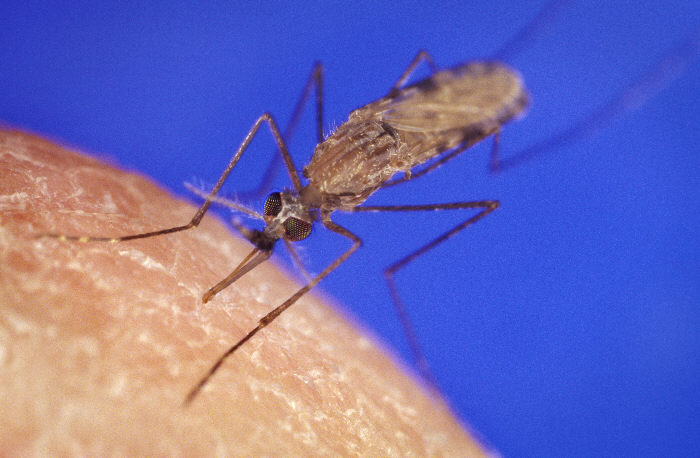| Online: | |
| Visits: | |
| Stories: |

| Story Views | |
| Now: | |
| Last Hour: | |
| Last 24 Hours: | |
| Total: | |
Infertile GM Mosquitoes To Be Released To Cut Malaria Spread
For the first time, malarial mosquitoes have been modified to be infertile and pass on the trait rapidly – raising the possibility of reducing the spread of disease.
The mosquito species Anopheles gambiae is a major carrier of dangerous malaria parasites in sub-Saharan Africa, where 90 per cent of annual malaria deaths occur. Malaria infects more than 200 million people each year and causes more than 430,000 deaths.
Now, a team of researchers led by Imperial College London have genetically modified Anopheles gambiae so that they carry a modified gene disrupting egg production in female mosquitoes. They used a technology called ‘gene drive’ to ensure the gene is passed down at an accelerated rate to offspring, spreading the gene through a population over time.

Credit: Wikipedia
Normally, each gene variant has a 50 per cent chance of being passed down from parents to their offspring. In the Imperial team’s experiments with Anopheles gambiae, the gene for infertility was transmitted to more than 90 per cent of both male and female mosquitoes’ offspring.
The technique uses recessive genes, so that many mosquitoes will inherit only one copy of the gene. Two copies are needed to cause infertility, meaning that mosquitoes with only one copy are carriers, and can spread the gene through a population.
This is the first time the technique has been demonstrated in Anopheles gambiae. The team targeted three different fertility genes and tested each for their suitability for affecting a mosquito population through gene drive, demonstrating the strength and flexibility of the technique to be applied to a range of genes. The results are published today in the journalNature Biotechnology.
“The field has been trying to tackle malaria for more than 100 years. If successful, this technology has the potential to substantially reduce the transmission of malaria,” said co-author Professor Andrea Crisanti from the Department of Life Sciences at Imperial.
“As with any new technology, there are many more steps we will go through to test and ensure the safety of the approach we are pursuing. It will be at least 10 more years before gene drive malaria mosquitoes could be a working intervention,” added Professor Austin Burt from Imperial’s Department of Life Sciences.
Many current measures to control malaria rely on reducing populations of malarial mosquitoes, such as insecticides and bed nets. These have proven very successful in reducing the spread of malaria, however these approaches face important costs and distribution challenges, as well as growing issues of resistance.
A control measure relying on genetic spread through a targeted population of malaria mosquitoes could complement these interventions without adding dramatically to the health budget of resource-constrained countries.
“There are roughly 3,400 different species of mosquitoes worldwide, and while Anopheles gambiae is an important carrier of malaria, it is only one of around 800 species of mosquito in Africa, so suppressing it in certain areas should not significantly impact the local ecosystem,” said lead author Dr Tony Nolan from the Department of Life Sciences at Imperial.
To test the gene drive, the team first identified three genes that impacted female fertility by disrupting the activity of suspected target genes. They then modified the genes with the CRISPR/Cas9 endonuclease, a type of DNA cutting tool that can be designed to target very specific parts of the genetic code.
When chromosomes carrying these modified genes come into contact with chromosomes without the gene variant, an enzyme is produced that cuts it, causing a break. The broken chromosome uses the chromosome carrying the desired variant as a template to repair itself, copying in the code with the altered gene variant.
The team aims to improve the expression of their gene drive elements, but also to find more genes to target, which would reduce the possibility of mosquitoes evolving resistance to the modification.
Exploring target genes is also helping the researchers to learn more about basic mosquito biology. “We hope others will use our technique to understand how mosquitoes work, giving us more ammunition in the fight against malaria,” said first author Andrew Hammond, also from Imperial’s Department of Life Sciences.
Contacts and sources
Hayley Dunning
Source: http://www.ineffableisland.com/2015/12/infertile-gm-mosquitoes-to-be-leased-to.html



